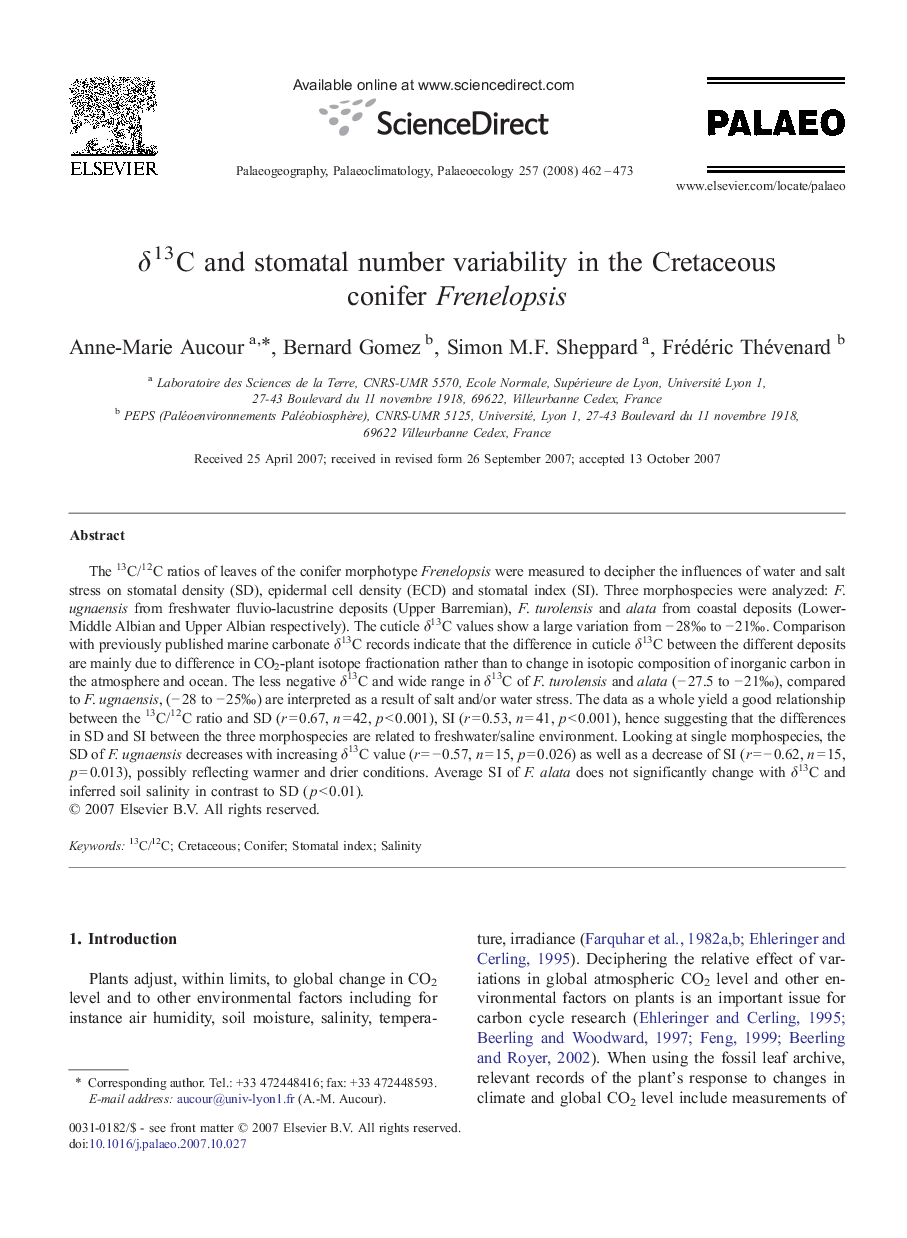| Article ID | Journal | Published Year | Pages | File Type |
|---|---|---|---|---|
| 4468693 | Palaeogeography, Palaeoclimatology, Palaeoecology | 2008 | 12 Pages |
The 13C/12C ratios of leaves of the conifer morphotype Frenelopsis were measured to decipher the influences of water and salt stress on stomatal density (SD), epidermal cell density (ECD) and stomatal index (SI). Three morphospecies were analyzed: F. ugnaensis from freshwater fluvio-lacustrine deposits (Upper Barremian), F. turolensis and alata from coastal deposits (Lower-Middle Albian and Upper Albian respectively). The cuticle δ13C values show a large variation from − 28‰ to − 21‰. Comparison with previously published marine carbonate δ13C records indicate that the difference in cuticle δ13C between the different deposits are mainly due to difference in CO2-plant isotope fractionation rather than to change in isotopic composition of inorganic carbon in the atmosphere and ocean. The less negative δ13C and wide range in δ13C of F. turolensis and alata (− 27.5 to − 21‰), compared to F. ugnaensis, (− 28 to − 25‰) are interpreted as a result of salt and/or water stress. The data as a whole yield a good relationship between the 13C/12C ratio and SD (r = 0.67, n = 42, p < 0.001), SI (r = 0.53, n = 41, p < 0.001), hence suggesting that the differences in SD and SI between the three morphospecies are related to freshwater/saline environment. Looking at single morphospecies, the SD of F. ugnaensis decreases with increasing δ13C value (r = − 0.57, n = 15, p = 0.026) as well as a decrease of SI (r = − 0.62, n = 15, p = 0.013), possibly reflecting warmer and drier conditions. Average SI of F. alata does not significantly change with δ13C and inferred soil salinity in contrast to SD (p < 0.01).
